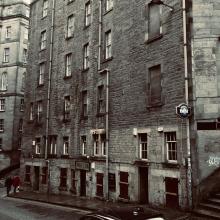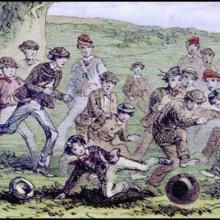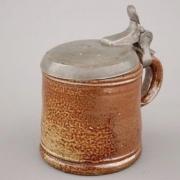
1868–69
ALEXANDER SELKIRK, THE ORIGINAL OF ROBINSON CRUSOE.
The following letter has been sent to Commodore Powell and the officers of H.M.S. Topaze,[1] on the occasion of their erecting a tablet to the memory of Alexander Selkirk, by the only surviving relatives of this world-renowned sailor, who lived in solitude for four years and four months on the island of Juan Fernandez.[2]
They are resident in Edinburgh, and cherish with much veneration a relic in the shape of an old-fashioned flip-can,[3] which the sailor had with him on the island.
The tablet referred to was manufactured by Messrs D. Child & Son, Valparaiso, and bears the following inscription:—“In memory of Alexander Selkirk, mariner, native of Largo, in the county of Fife, Scotland, who lived on this island, in complete solitude, for four years and four months. He was landed from the Cinque Ports galley, 96 tons, 18 guns, A.D. 1704, and was taken off in the Duke privateer, 12th February 1709. He died Lieutenant of H.M.S. Weymouth, A.D. 1723, aged 47 years. This tablet is erected near Selkirk’s look-out, by Commodore Powell and the officers of H.M.S. Topaze. A.D. 1868.”
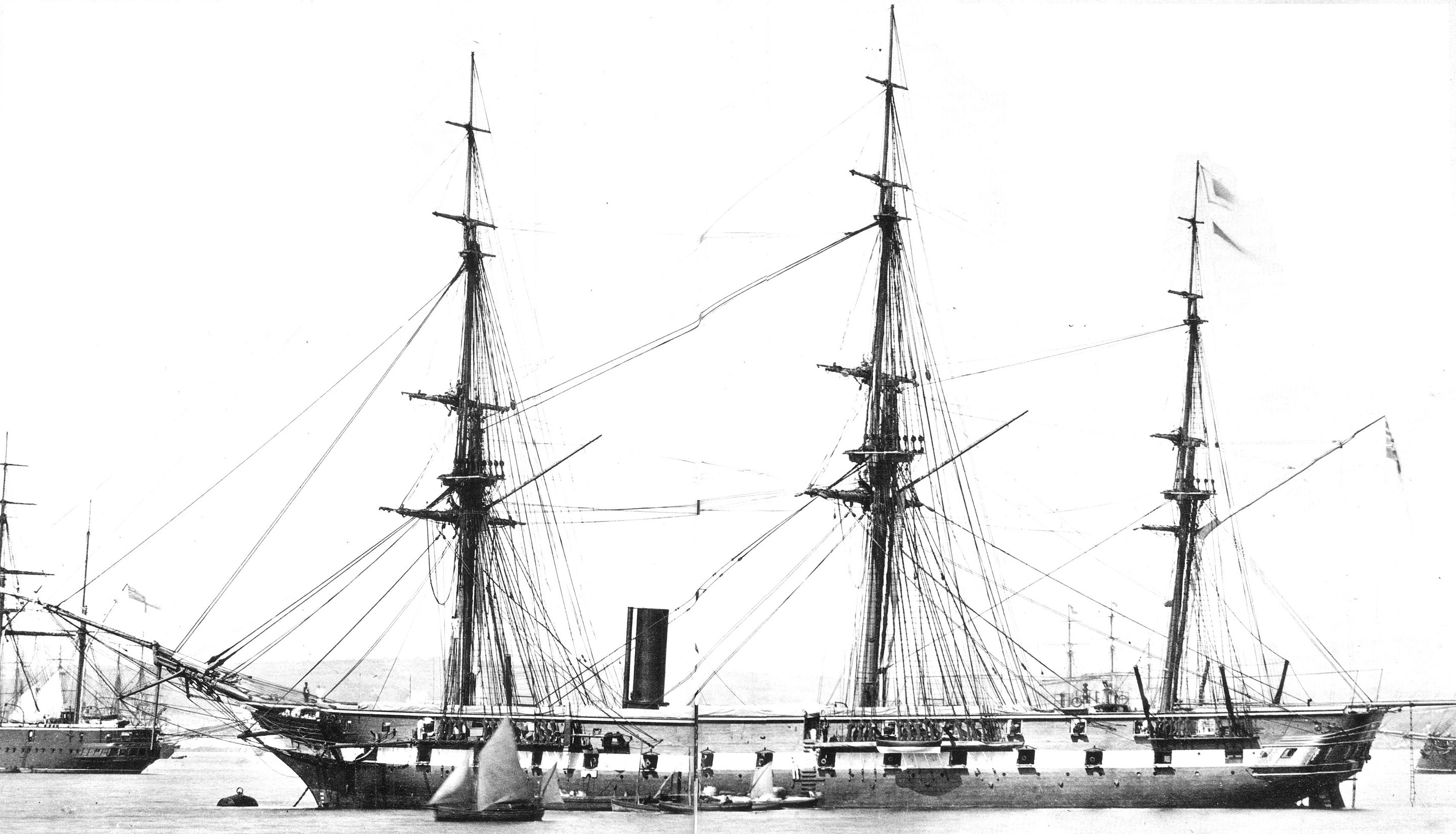
“TO COMMODORE POWELL AND OFFICERS OF H.M.S. TOPAZE.
“ Sir,—Having seen a paragraph in an Edinburgh paper,[4] taken from a letter received from the West Coast of South America, in which the writer mentions that Commodore Powell and officers of H.M.S. Topaze are about to erect on the island of Juan Fernandez a tablet to the memory of Alexr. Selkirk, whose history is popularly believed to have afforded Defoe the materials of his attractive story, and that the countrymen of Selkirk will be glad to know that naval officers at this distant period wish to show respect to his good name, we beg to return you our sincere thanks for the great honour done to our departed relation, we being the only lineal descendants of the name, and having in our possession an interesting relic, which he had with him on the island, namely his flip-can, of which Howell, in his ‘Life of Selkirk,’ gives the following description:
‘But by far the most interesting relic is his flip-can, in possession of his great-grand-nephew, John Selcraig.
'It holds about a Scottish pint, and is made of brown stoneware glazed; it resembles a common porter jug as used at the present day. On it is the following inscription and poesy—as in former times every thing belonging to a sailor that would admit of it had its rhyme—
Alexr. Selkirk, this is my one.
When you me take on board of ship,
Pray fill me full with punch or flip.’
“In conclusion, we beg to state that if you or any of your officers were ever visiting Edinburgh, and wishing to see this relic, we would feel proud in showing it to you, or to any other person who may feel interested in seeing it.—ln name of our relations, I am, sir, your most obedient servant,
Thomas Selcraig,
No. 2 Glenorchy Place, Greenside Row,[5]
Edinburgh.
“To Commodore Powell and Officers of
H.M.S. Topaze.”[6]
Edinburgh Evening Courant, 19 December 1868
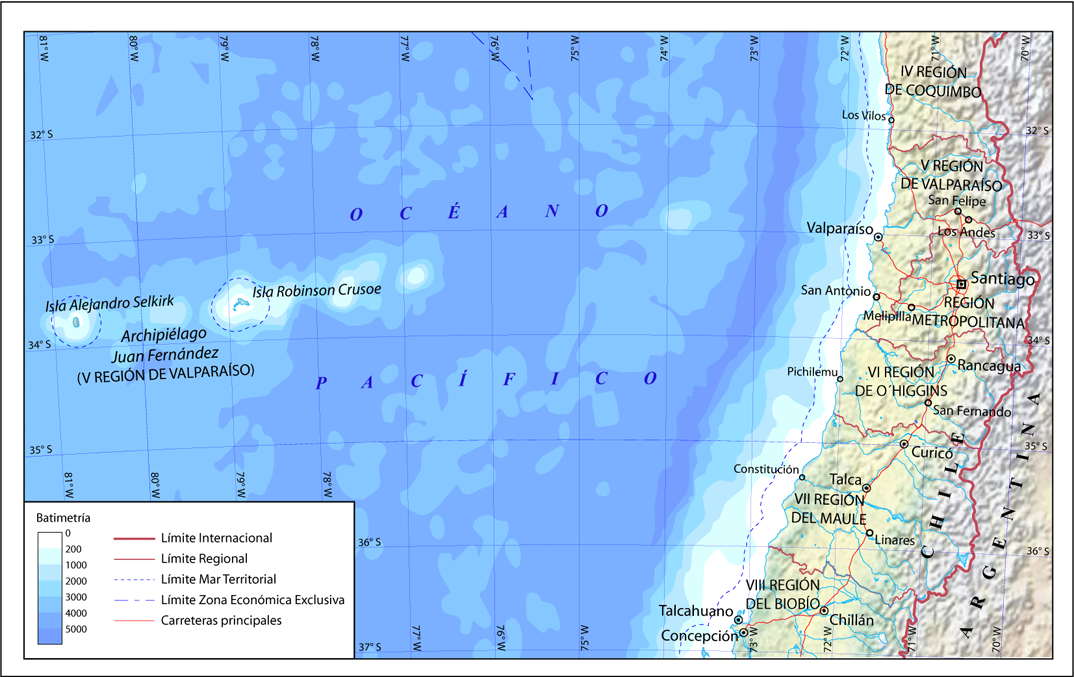
[Image top-right: invaluable.com. H.M.S. Topaze image: Wikipedia, creative commons. Map: Wikivoyage, creative commons.]
[1] From 1858 to 1878, Topaze served as a 51-gun wooden screw frigate.
[2] The island is part of the Juan Fernandez Archipelago belonging to Chile, and is now called Isla Robinson Crusoe. More recently, a relative of Selkirk erected a second plaque reading, ‘Tablet placed here by Allan Jardine of Largo, Fife, Scotland, direct descendant of Alexander Selkirk’s brother David. Remembrance ‘Till a’ the seas gang dry and the rocks melt in the sun.’ January 1983.
[3] From 1695, a mixture of beer, rum, and sugar, heated with a red hot iron that made it froth or ‘flip’ (Oxford English Dictionary). The image used top-right is a guess at what Selkirk's flip-can would have looked like. If any reader knows better, please get in touch.
[4] This paragraph appeared in the Scotsman on 19 Oct. 1868—‘Erection of a Monument to Alexander Selkirk in the Island of Juan Fernandez.— In a letter recently received from the west coast of South America , the writer mentions that Commodore Powell, and the officers on board H.M.S. Topaze, are to erect in the island of Juan Fernandez a tablet to the memory of Alexander Selkirk, whose history is popularly believed to have afforded DeFoe the materials of his attractive story. The tablet is’to be placed near a break in the high mountain ridge which rises from the bay at the northern part of the island . It is said that to that high pass Selkirk used daily to climb, in the hope of seeing some friendly sail that might convey him from his dread solitude. The countrymen of Selkirk will be glad to know that naval officers at this distant period wish to show respect to his good name. […] It was a curious thing that, whilst seeking for some one to do the lettering on the tablet, a man offered himself who rather claimed the job, on the grounds that he had erected the tablet to Captain Cook’s memory at the Sandwich Islands.—Dundee Advertiser.’
[5] In the Post Office Directory, 1868–69, Selcraig is listed as a grocer at 1 Glenorchy Pl. No such name appears on maps of the time, but it may have been a local name for the open area between Greenside Row and the building marked in the 1877 Ordnance Survey as Glenorchy Land. In Selcraig’s second letter (below), he gives his address as 26 Greenside Row.
[6] Coincidentally, the grand Christmas pantomime opening at the Theatre Royal on 21 Dec. 1868 was Robinson Crusoe, or, Harlequin Man Friday, and Hoop De Dooden Doo, the King of the Caribee Islands.
*****
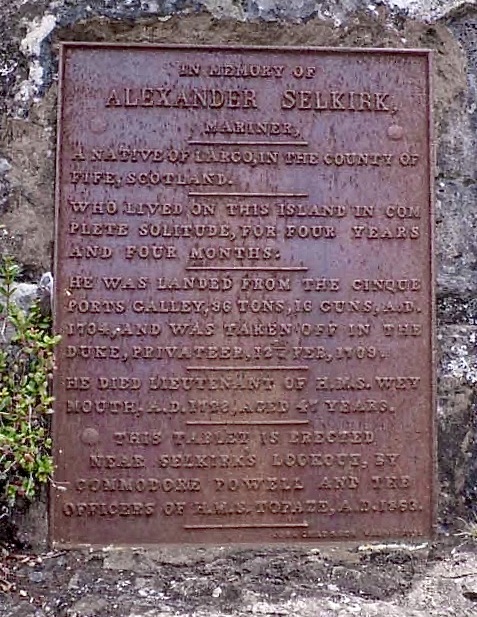
ROBINSON CRUSOE.
26 Greenside Row, Edinburgh, April 8, 1869.
SIR,—A paragraph appeared in the columns of the Scotsman, November 28, 1868,[7] inserting a letter sent by me to Commodore Powell, regarding the monument which he and his officers erected on the island of Juan Fernandez, to the memory of Alexander Selkirk, to which he has sent me the following reply, with a photograph of the inscription on the tablet enclosed.
Port Mont, Chili, January 27, 1869.
I beg leave to thank you for your kind acknowledgement to the officers of H. M. S. Topase, on the occasion of their having erected a tablet to your ancestor Alexander Selcraig, on the island of Juan Fernandez.
It is placed in a beautiful spot about 1700 feet above sea view; it is let into hard rock, and so firmly secured that it may possibly last many generations.
I may mention that, by a curious coincidence, the man who put up the tablet for us was called Dampeir.[2]
I beg to enclose you a photograph of the tablet, and should circumstances occur, we will send you some seeds of the shrubs of the island.—I have the honour to be your most obedient servant,
R. Powell, Commodore.
To Thomas Selcraig, Esq.
By allowing this a space in your valuable columns, you will oblige, &c.,
THOMAS SELCRAIG
Scotsman, 12 April 1869
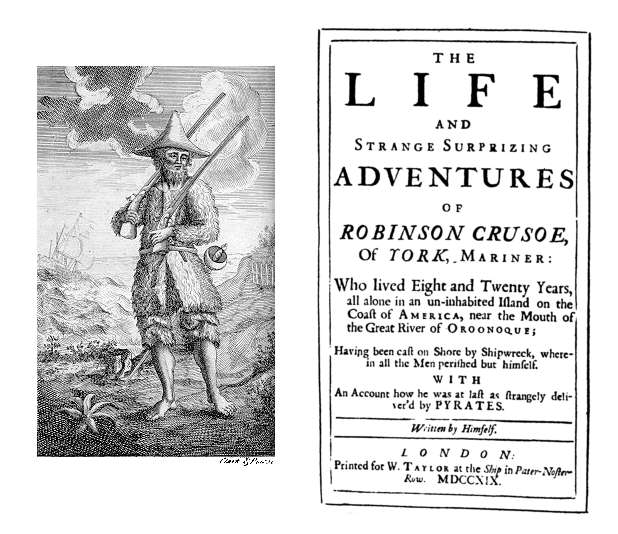
[Tablet image: Wikipedia, creative commons. Crusoe image: Wikipedia, creative commons.]
[7] It does not appear in the Scotsman on this date. Selcraig may be misremembering his letter to the Edinburgh Evening Courant on 19 Dec. 1868.
[8] William Dampier (1651–1715) was an explorer, privateer and explorer, and the first Englishman to land on the Australian continent. He was captain of the vessel on which Selkirk, his former shipmate, left Juan Fernandez.
*****
News from the Mews will resume on Monday in Regent Terrace Lane.

